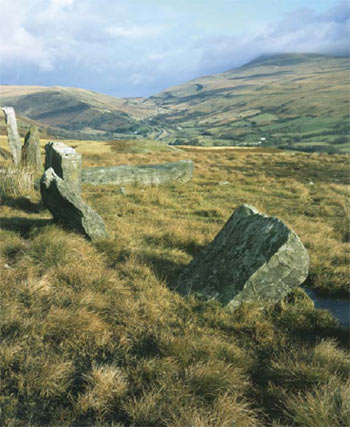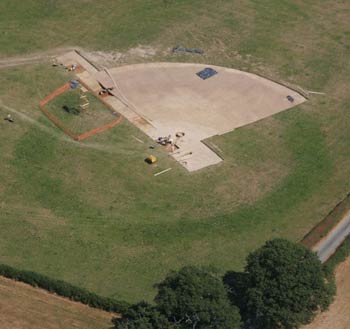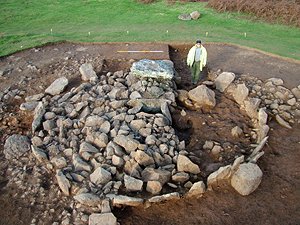NEOLITHIC
AND EARLIER BRONZE AGE WALES (4000 BC – 1500 BC)
The introduction of farming around 4000 BC fundamentally
changed the environment and the ways in which people lived
and interacted, but we understand little about this transition.
Wales has much evidence of funerary and ritual activities,
but little of settlement.
The following are extracts/summaries of the key priorities
identified for the period. For the full text, click on the
All Wales Final Document link below.
-
The Mesolithic-Neolithic transition
- There is a need to study sea level change and locations
of settlement through excavation, dating and environmental
sampling.
-
Understanding monuments
– Following recent cataloguing, the types of Neolithic
and Bronze Age monuments need to be understood through
topographical analysis, environmental sampling, dating
and re-examining material from past excavations.
-
Where were the settlements?
– Few settlements of the Neolithic or Early Bronze
Age monument builders are known, creating a need to review
cropmarks and artefact distributions and consider targeted
surface collection and sample excavation.
-
How did prehistoric populations
use the landscape? - There is a need to examine
the vicinities of monuments to identify field systems,
seek evidence from natural channels and bogs and examine
the sources and uses of raw materials.
|

 |
Saith Maen stone
row, near Dan yr Ogof, Powys.
Crown Copyright ©RCAHMW (NPRN84328, D12006_0772RI)
|

 |
A suggested reconstruction
of one of the Neolithic houses at Llandegai, Gwynedd.
©Cambrian Archaeological Association |

 |
Dyffryn Lane
Henge Excavation
©Clwyd-Powys Archaeological Trust |

 |
Llanelwedd Cairn
Excavation
©Clwyd-Powys Archaeological Trust |
|

